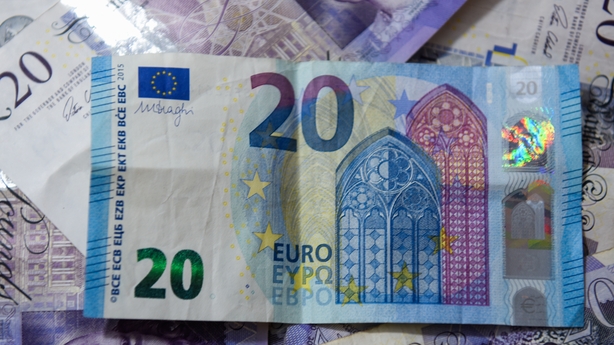The pound dipped today and headed for a more than 1% drop over the week against the dollar after poor economic data and a rise in expectations that the Bank of England will cut interest rates.
Sterling is also headed for its ninth consecutive week of losses against the euro. Analysts say the outlook for the currency is worsening.
Government bond yields have dropped sharply in recent weeks as investors poured into government debt markets, betting that global central banks would move to ease policy in the face of stubbornly low inflation and slowing economic momentum.
This week, investors decided the Bank of England will not be immune from the pressure to ease and are now pricing in a rate cut over the next 12 months.
Relatively dovish comments from Governor Mark Carney during the week heightened such expectations.
Added to that, weak purchasing managers' index surveys suggested the British economy may have contracted in the second quarter, underlining economic fragility amid prolonged uncertainty about how and when Britain will leave the European Union.
The UK's delayed departure date is scheduled for October 31.
Analysts said considerably weaker than expected growth was increasing pressure on the Bank of England to shift to a more dovish policy stance following the lead of other major central banks.
Sterling dropped 0.2% in early London trading to $1.2550 - its lowest level since June 19 and leaving it down by more than 1% since Monday.
Against the euro the pound was little changed at 89.72 pence per euro, leaving it down 0.3% on the week.
Brexit with a deal would give sterling a boost - poll
Sterling would rally substantially if Britain leaves the European Union with a deal but weaken further if no such accord is reached, a Reuters poll showed today.
Sterling suffered its biggest loss against the euro in two years in May - and also lost ground against the dollar.

But it coasted through June as markets awaited the outcome of a Conservative Party leadership battle to become Britain's new prime minister.
It is still not clear how, when, or even if Britain will leave the EU, and the results of the two-horse race to become leader due on July 23 could steer that eventual outcome.
Former London Mayor Boris Johnson, the face of the official 2016 campaign to leave the EU, is expected to beat Foreign Minister Jeremy Hunt to the job.
Johnson has a more hardline stance on Brexit and has said Britain must leave the EU on October 31 "deal or no deal".
If it is no deal then one pound, worth around $1.26 yesterday, will only get you between $1.17 and $1.25 in the month after the two sides part ways, according to the median estimate in the July 1-4 poll of currency strategists.
"If we do leave with a 'no-deal' then economic worries would escalate. There wouldn't be the huge shock that the result of the referendum was, but it would obviously cause huge waves in the market," said Tony Nyman at Informa Global Markets.
But if Britain leaves with a deal, sterling will rally to between $1.30 and $1.36, the poll found, still well short of where it was trading before the June 2016 referendum decision to leave the EU.
"If there is a positive conclusion in talks then sterling would motor," Nyman added.
Reuters polls of economists taken since the surprise decision to leave have consistently said the two sides would eventually agree a deal.
Medians in the wider poll of around 70 foreign exchange strategists suggest they echo that view as they see the pound strengthening.
In one month a pound will get you $1.26. In six months it will be worth $1.28, and in a year sterling will be 5% stronger at $1.32.
Those forecasts are a touch weaker than in June's poll despite increasing expectations the US Federal Reserve will cut interest rates.
A Reuters poll last month suggested the Bank of England would raise rates next year, but weak economic figures and a speech by Governor Mark Carney earlier this week have convinced money markets to price in a rate cut over the next 12 months.
By the end of September, the European Central Bank will either cut its deposit rate or ease its forward guidance further by pledging to keep interest rates lower for longer, keeping the euro in check.
Sterling is therefore predicted to gain a little ground against the common currency.
One euro yesterday would get you about 89.7 pence but in year one will only be worth 88 pence.

